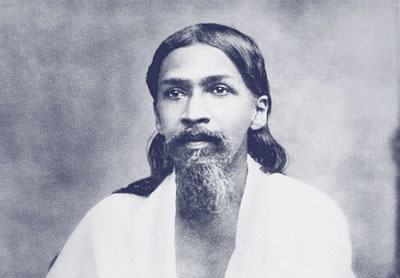Posted by Richard G. Petty, MD on September 14, 2012 · Leave a Comment

“Increasing numbers of us have heard the Gaian voice and seen in our experience ways of being together that celebrate and affirm life. More and more we are in conversations where we speak of the great forces of life – love, purpose, soul, spirit, freedom, courage, integrity, meaning. The new story is being born in these conversations. We are learning to give voice to a different and fuller sense of who we are.”
–Margaret J. Wheatley (American Writer and Expert in Organization Behavior and Systems Thinking, 1944-)

“The Fabric of the Future: Women Visionaries Illuminate the Path to Tomorow” (Patrice Wynne, Ken Wilber)
Filed under Freedom, Innate Freedom, Integrity, Interconnection, Interdependence, Interrelationship, Love, Meaning, Purpose, Self-organization · Tagged with Freedom, Gaia, Innate Freedom, Interconnection, Interdependence, Love, Margaret J. Wheatley

“I felt very connected to a higher power and I was sensitive to others’ feelings about it. But it seemed that all the adults at church sang about one thing and then practiced another.”
–Allison DuBois (American Writer and Psychic, 1972-)

“Perfect health, sincerity, honesty, straightforwardness, courage, disinterestedness, unselfishness, patience, endurance, perseverance, peace, calm, self control are all things that are taught infinitely better by example than by beautiful speeches.”
–Sri Aurobindo (a.k.a. Aurobindo Ghose, Indian Nationalist Leader, Mystic, Philosopher and Creator of Purna (Integral) Yoga, 1872-1950)

“Real integrity is doing the right thing, knowing that nobody’s going to know whether you did it or not.”
–Oprah Winfrey (American Television Personality and Philanthropist, 1954-)

I am sure that this is a story that is going to be picked up and re-worked by those excellent writers over at Law and Order.
An academic at the University of Sheffield has used groundbreaking technology to investigate the potential innocence of a woman convicted of poisoning a child in her care.
Professor Sean Spence, who is a pioneer in the use of functional Magnetic Resonance Imaging (fMRI) to detect lies, carried out the experiments on the woman who, despite protesting her innocence, was sentenced to four years in prison. His results have now been published for the first time in the journal European Psychiatry.
Sean examined the woman’s brain activity as she alternately confirmed her account of events and that of her accusers. The tests demonstrated that when she agreed with her accusers´ account of events she activated extensive regions of her frontal lobes and also took significantly longer to respond: these findings have previously been found to be consistent with false or untrue statements.
Although the technology has previously been claimed to be 90% accurate, which is far superior to “lie detector” – polygraph – tests, its use has also been open to debate. Lie detection tests are already used regularly in parts of the United States justice system, as well as by businesses. But as far as I know, these are the first brain scanning tests of their kind, carried out on a real-life case, reported in the world literature.
Professor Spence said:
“This research provides a fresh opportunity for the British legal system as it has the potential to reduce the number of miscarriages of justice. However, it is important to note that, at the moment, this research doesn’t prove that this woman is innocent. Instead, what it clearly demonstrates is that her brain responds as if she were innocent.”
“If proved to be accurate, and these findings replicated, this technology could be used alongside other factors to address questions of guilt versus innocence.”
Last January I wrote about the link between creativity and promiscuity.
I’ve just picked up this month’s copy of the Mensa Magazine, published by British Mensa and there’s an interesting article by Dr. Desmond Morris entitled “Why brilliant men betray their wives.” Desmond is a national institution in Britain. A zoologist, ethnologist and surrealist painter, he always used to be on television and gained considerable notoriety for his book The Naked Ape that tried to explain human behavior by analogy with apes.
In his latest article Desmond follows some of the same reasoning that I did in my article: many intensely creative people also enjoy risk taking. He just talks about males, but I think that the same principles apply equally to many intensely creative and successful women, who also enjoy taking extreme risks.
Every act of creation demands that we see, feel or think differently about something. Desmond says that every piece of innovation or creativity is an act of rebellion. I only half agree with that: the truly creative person is busily establishing a new level of order. The creative rebel is a stereotype that’s not born out by experimental work on genius and creativity. The creative or innovative act is one of making new connections and in a sense it is also a moment of risk-taking, for the new technique, formula or invention may fail. We recently discussed the way in which resilience is a key to creativity: to keep going in the face of failure or adversity. Even the most highly creative are not every single day: I have known many Nobel Prize winners and award winning artists, and they all have their off days.
Desmond’s article highlights the multiple extra-marital affairs of Albert Einstein, John F. Kennedy, Charlie Chaplin and Bertrand Russell.
He argues that it is the innate compulsion to take risks that leads both to creative brilliance and an inability to remain with just one partner. He pursues the idea that our distant hunting ancestors required a new personality trait: bravery. The successful needed to take risks and be courageous. Desmond then again excludes women from his equation, saying that their reproductive contributions to the tribe made them too important to risk on the hunt. He now fast-forwards to the present, saying that the offspring of the adventurous males could either engage in physical risk-taking or explore new ideas. And that their curiosity leads them to explore not just ideas but novel sexual experiences. Once a “conquest” has been made, the risk-taking adventurer moves on to a new target.
It is certainly true that men are far more likely to die in accidents than are women, but it’s a bit of a stretch to attribute all of that to risk-taking. What about the male difficulties with multi-tasking and to resist peer pressure, to say nothing of much higher rates of substance abuse?
And yes, fame, power and wealth can be powerful aphrodisiacs. But to reduce immoral, dangerous and disrespectful behavior to a risk-taking gene from our distant ancestors seems to me to a wild extrapolation based on a very selective use of a small amount of information.
Because infidelity surely has many more strands to it that just a genetic “itch.” Many highly successful people are enormously narcissistic and so fail to take into account the damage that their infidelity might do to their spouse and children.
Seeing sex as no more than a branch of gymnastics is also off the mark. Even a casual encounter will likely contain emotional, subtle and even spiritual components. If a relationship is failing because those are all missing, it is no surprise if a spouse investigates divorce and other options. But that is not risk taking: it is fulfilling a need that is not being met by the current partner.
Posted by Richard G. Petty, MD on April 3, 2006 · 7 Comments
“To tell a falsehood is like the cut of a saber; for though the wound may heal, the scar of it will remain.” –Saadi (a.k.a. Sa’di or Sadi or Musharrif-uddin, Persian Poet, c. 1213-1292)
If you are a regular reader, you know that I try to examine issues in five basic realms: physical, psychological, relational (relationships), subtle and spiritual. In this post, I am going to show you what is so different about our approach to handling problems by using the example of pathological lying.
I want to use this example because you may well have come across people who are pathological liars and I have seen an extraordinary case myself quite recently. Though none comes close to a young woman whom I once tried to help several years ago. To get to the bottom of her problems, I did background research on her that would have made Sherlock Holmes proud, finally marshaling the evidence in several very thick files of information about fabricated life events, relationships with famous people that never happened and false employment and medical records. When I proudly produced the fruits of several weeks’ work, I was greeted with a sly smile, as she said, “Oh those are only the ones where I used six aliases; you haven’t got the records from the other thirty names that I’ve use.” I was crestfallen.
Pathological lying is also called pseudologia fantastica or mythomania. The lies are usually fluent and plausible and the untrue statements and often grandiose and extreme. Particularly in times of heightened emotion, memory is falsified and distorted and events and circumstances misinterpreted.
In a recent case an individual claimed to have already been pre-selected for the United States Olympic team for 2008, despite being only a good average performer and being unknown to the team selectors. The pathological liar usually believes their false answers: as a rule of thumb, deliberate liars know when they are lying, and pathological liars do not always.
Pathological lying may accompany certain types of personality disorder, particularly borderline, histrionic and antisocial types as well as conduct disorder. It is related to the so-called Munchausen’s syndrome in which people mimic real diseases. There was a famous case in the UK of a man who was subjected to all manner of investigations during his many years of wandering from one hospital to another with all manner of fabricated medical conditions. I was once walking past the Emergency Room when a friend asked me to stop by and look at a patient, telling me that there seemed to be something familiar about him. I’ve always had a decent memory, so as soon as saw him I told the patient and my friend that he was last in hospital on November the 7th the year before, I gave him the alias that he had then used and that he had claimed to be a truck driver from a town in the English Midlands. The patient immediately left the hospital. A shame: it would have been good to know why he did it.
Sometimes people make things up when there is a defect in their ability to reason or judge: it may happen in schizophrenia, as well as a condition called Korsakov’s psychosis that can happen in severe chronic alcoholism and malnutrition. We sometimes still see it in people suffering from older people suffering from cerebral syphilis and in people with AIDS-related dementia. Another related problem is of confabulation in which people with amnesia make up false memories to cover the gaps in their memory.
Physical
There has been recent data from a study published in the British Journal of Psychiatry. The team from the University of Southern California team studied 49 people and found those known to be pathological liars had up to 26% more white matter than others with antisocial personality disorder who were not liars and healthy volunteers. In general, white matter transmits information and grey matter processes it. Having more white matter in the prefrontal cortex may aid lying. This study could help research into areas such as people who feign illness. There is also something else: the findings are in line with previous studies that have shown that children with autism are less capable of lying than other children. Some studies of the brain in individuals with autism show that they have more grey matter than white matter: the opposite pattern to the liars in this study.
This neurological study gets back to the problem of understanding how much of a person’s behavior is under voluntary control and how much is innate. Some distinguished psychiatrists are already suggesting that this supports the notion that pathological lying is a separate psychiatric entity. I’m sure that it’s only a matter of time before this data is introduced by the defense in a criminal case. But is that the end of the question? No, because we also need to consider the other four aspects or domains of a person.
Psychological
Apart from psychotic and organic syndromes, pathological lying may occur in people with very low self-esteem. I have written elsewhere about self-esteem and the data indicating that boosting self-esteem is valueless. What does help is genuine accomplishment from which self-esteem arises. The exception is in those poor souls whose self-esteem seems to be held in a kind of leaky bucket: however much they achieve, they still feel badly about themselves. Though sometimes such people need outside help, in my most recent book I present a number of methods for dealing with the “leaky bucket syndrome.” These involve precise methods for:
- Identifying and working to re-integrate your ego-fears
- Avoiding self-consciousness
- Detaching from the opinions of others
- The practice of gratitude
- Pinpointing and following your True Purpose
- Practicing personal integrity
- Liberating yourself from negative experiences, cognitions and emotions
Relationships
A recent Anglo-Italian study published in the Journal of Nonverbal Behaviour and reported by the BBC has shown that although most people believe that they can spot liars,when in fact, they cannot. It is commonly believed that liars can be detected by body movements and by avoiding eye contact. But the research shows that liars tended to stay still as they were acutely aware their body language might give them away. The popular perception that when people lie they scratch their nose and play with their hair is also not true. These small “nervous” movements are known as “self-adaptor gestures” that are thought to serve to comfort a person feeling vulnerable or exposed. But instead of giving into these urges, liars try very hard to stay still and are just as likely as an honest person to look the questioner in the eye.
But there were some signs of lying:
- Liars use certain types of hand gestures more in order reinforce the point
- The use of metaphoric gestures – such as touching the heart to show love and or the holding of hands apart to indicate size – are used 25% more often when people lie
- Rhythmic gestures such as repeated pointing to emphasize statements are also used more often by liars
People lie in and about relationships all the time, and it can have a dreadfully corrosive effect on a relationship. But I am strongly opposed to the constant chant of “Get real.” Although it is a worthy ultimate goal, simply to kick away someone’s psychological support system – for the lies will have had some causes – without putting anything in their place, can have a devastating effect.
And if the lies are covering any form of infidelity, stop the activity before it is too late.
I am also reminded of the statement once made by Abraham Lincoln: “No man has a good enough memory to make a successful liar.”
Subtle
How do lies impact the subtle systems of the body? Profoundly. The subtle systems are animated by thought, and if your thoughts are scattered by having to keep track of what you said to whom, or if you are trying to come to terms with the true intent of another person in a relationship, it can drag energy from where it is needed. It is another reason why so many interpersonal difficulties can translate into physical problems. Conversely, working with the subtle systems of the body may help cure people who needlessly lie.
Spiritual
There is a reason why many religious traditions refer to the devil as the Prince of Lies. Lying has always been regarded not just as a moral failing but as a spiritual one as well.
Pathological liars may actually benefit from finding a spiritual orientation. For one thing s certain lying to oneself or lying to others is sure to paralyze any spiritual aspirations.
“This above all: to thine own self be true. And it must follow, as the night the day, thou can’st not then be false to any man.” {Hamlet, Act I, Scene iii}
–William Shakespeare (English Poet and Dramatist, 1564-1616)
Technorati tags: Lying, personality disorders, psychology












